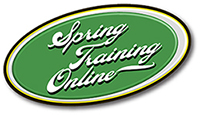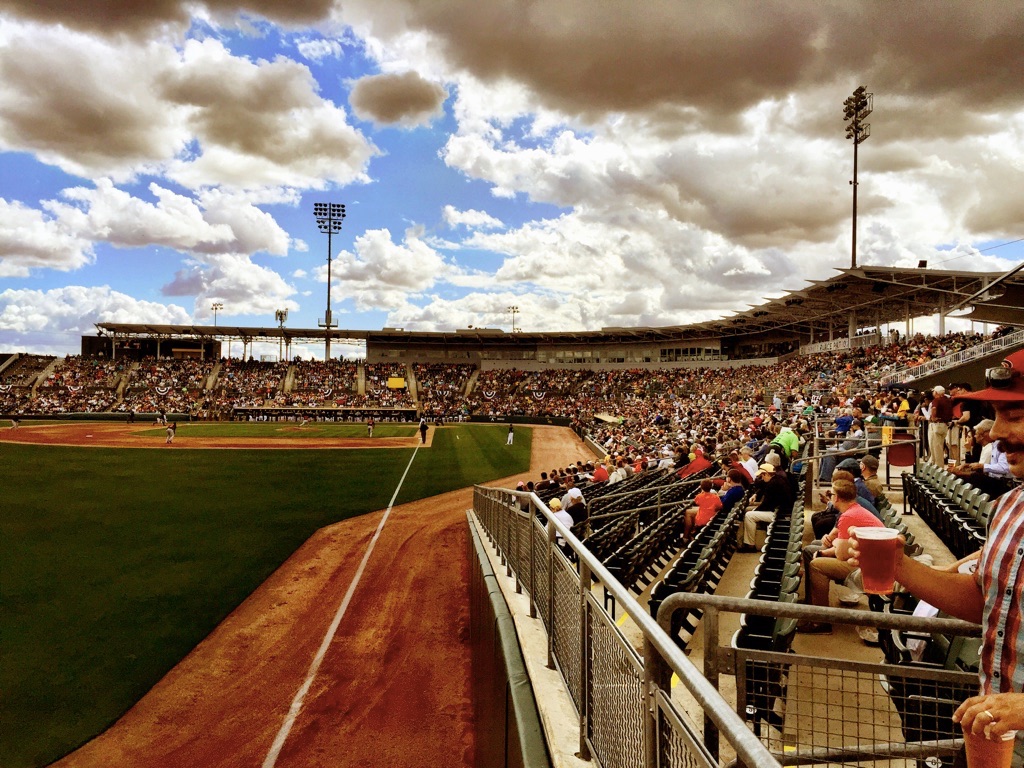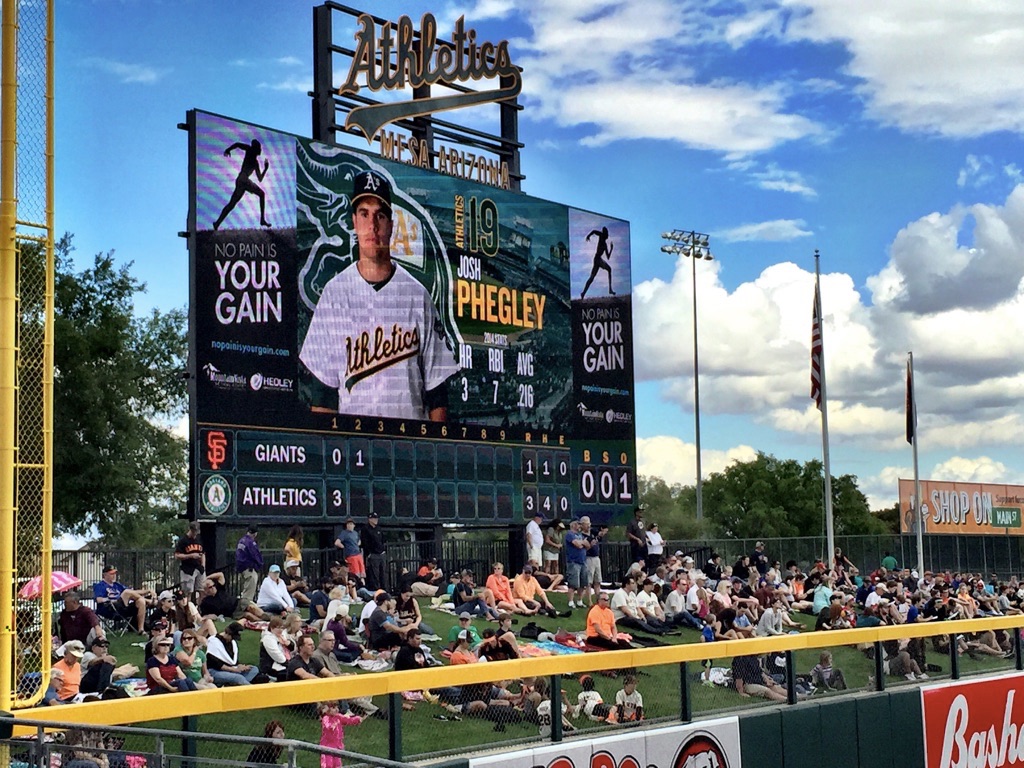Athletics Spring Training Home | If You Go … | 2025 Schedule | Minor League Schedule | Roster
| HOHOKAM PARK |
| Capacity | 12,000 |
| Year Opened | Opened in 1997; renovated in 2015 |
| Dimensions | 340L, 390LC, 410C, 390RC, 350R |
| Surface | Grass |
| Local Airport | Phoenix or Mesa |
| Ticket Prices | To be announced |
| Tickets on Sale | To be announced |
| Ticket Line | 877/493-BALL (2255) |
| Ticket Web Site | oaklandathletics.com |
| Address | 1235 N. Center St., Mesa, AZ 85201 |
| Directions | rom Phoenix, take 202 Loop east to exit 12 (McKellips Road), turn right on W. McKellips Road; and turn right onto N. Center Street. HoHoKam Stadium will be on the left-hand side of the street. From Tucson, take Route 10 North to 360 (Superstition Highway), to Country Club Drive exit north; turn right at Brown Road; turn left at Center Street; the ballpark is one block on the right. |
Athletics Spring Training: Moving to Mesa
For fans used to cramped seating and lack of shade at Phoenix Municipal Stadium, the move by the Oakland Athletics to a renovated Hohokam Stadium in Mesa for spring training was a pleasure indeed.
Hohokam Stadium was originally built in 1977 for the Athletics and then rebuilt in 1997 for the Chicago Cubs, and you can’t help but expect Ronny Woo Woo to be patrolling the outfield berm or Ron Santo chatting with fans from the press box when you visit. (It also opened as Hohokam Park, but sometime in the last year acquired the Hohokam Stadium name.) Every trace of the red and blue have been removed from Hohokam Stadium, as the A’s and Mesa forge a new identity.
The Hohokam Stadium renovation happened on a few different levels. For fans, green and gold – as well as lots of grey paint – is the new theme, with a overhauled entry gate, new murals in the concourse, new fan decks, upgraded concessions and the largest LED videoboard in spring training. For players, an expanded clubhouse with weight room provides more comfort than experienced at Phoenix Municipal Stadium. And then there’s the Lew Wolff Training Center at Fitch Park (as we discussed here), which raising Athletics training abilities to a new level.
Seating down each line was removed and replaced by party decks, complete with their own concessions, picnic tables and drink rails on the home side. (The away side sported artificial turf and no drink rails.) While these drink rails were a little too off the action to be usable for most of the game, they still attracted fans for most of the game. Perhaps the best thing about both party decks: they were shaded.
In fact, there’s now an abundance of shade at Hohokam Stadium, thanks to a new canopy covering most of the grandstand. That means a very large share of the 200-level seating – basically, anything from Section 202 on the third-base side down to Section 213 is now fully shaded at the start of the game. (If you sit in the closer 100-level seats, you’ll be in the sun. Bring sunscreen, as there are no sunscreen dispensers as found in other spring-training ballparks.) There’s also shade in the upper-level group picnic areas.
The scoreboard location isn’t different, but it’s a new game there as well. The new Daktronics high-def videoboard, measuring 56 feet wide and 32 feet tall, is bright and clearly visible from almost every part of the ballpark.
Ovations is still in charge of the food, but they couldn’t address one of the big problems with the ballpark: with a 1970s design, most concession stands are under the grandstand, in a concourse with no view of the action. But no local brews on tap, save the offerings at a Lagunitas Brewing Company stand on the home side (though Four Peaks could be found in a can), and a standard array of the usual suspects ($7 for a domestic like Bud, $9 for a tall boy or a premium like Goose Island) were featured throughout the ballpark. At the end of the Cubs’ tenure, there was a big emphasis on booze at the ballpark; that emphasis is gone.
All in all, it was a successful debut for the A’s at HoHoKam Stadium; that success bodes very well for the future.
Spring Training History
The Athletics franchise dates back to the beginning of the American League in 1901. Spring-training sites have included: Philadelphia (1901, 1919); Charlotte, N.C. (1902); Jacksonville (1903, 1914-1918); Spartanburg, S.C. (1904); Shreveport (1905); Montgomery, Ala. (1906, 1923-1924); Dallas (1907); New Orleans (1908-1909); Atlanta (1910); San Antonio (1912-1913); Lake Charles, La. (1920-1921, 1938-1939); Eagle Pass, Texas (1922); Ft. Myers (1925-1936); Mexico City (1937); Anaheim, Cal. (1940-1942); Wilmington, Del. (1943); Frederick, Md. (1944-1945); West Palm Beach (1946-1962); Bradenton (1963-1968); Mesa (1969-1978; 2015-present); Scottsdale (1979-1983); Phoenix (1984-2014).
To receive spring-training information via email, please sign up for the Spring Training Online email newsletter.
The Athletics Spring Training Home | If You Go … | 2025 Schedule | Minor League Schedule | Roster



Comments are closed.